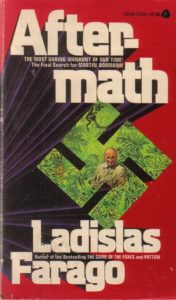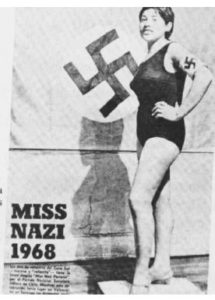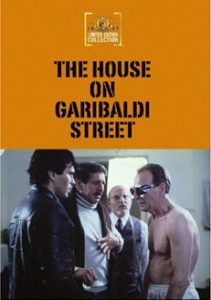All clickable links in red
Today, Israeli Intelligence’s reputation is in tatters, thanks to the “sudden” Gaza war. However, this was not so in the 1960s, 1970s and even 1980s, when there were many brilliant, “out of the box” operations and sudden mysterious deaths of Israel’s opponents that gave the Mossad a reputation for far-reaching omniscience.
The kidnapping and transport of Nazi War Criminal Adolf Eichmann was one such operation. On the one hand, the world cried hoarse about “neutrality being abused”. On the other hand, they secretly wished they could have shown such bravado in their operations.
So, who was Adolf Eichmann, and why was he so important? There had been more significant war criminals who had been brought to justice. Still, Eichmann eluded justice thanks to the connections of the “Odessa” “ratlines” that spirited away wanted Nazi criminals from Germany, transported them safely to South American countries, and gave them a new identity and jobs. Many wanted Nazi War criminals found refuge and employment in Argentina. A quick Google search shows the following books:
- The Real Odessa – How Peron Brought the Nazi War Criminals to Argentina
- Hunt for Nazis: South America’s Dictatorships and the Prosecution of Nazi Crimes
- Nazis on the Run: How Hitler’s Henchmen Fled Justice

One of the earliest books that I read was Aftermath (1974) by Ladislas Farago, which made the startling claim that Martin Bormann, the Nazi Party secretary and the man Hitler “listened to”, had survived and was living in a South American jungle. There were photographs of “Bormann” in his “jungle hideout”. As a 14-year-old schoolboy fascinated by Nazi Germany and its evil deeds, I found the claim of Bormann’s survival too fantastic and thought “come on, this seems too far out”. Much later I read that the author had been the victim of an elaborate hoax and the claim about Bormann’s survival was proven fake.
However, the rest of the book was packed with details of how the Nazis had escaped from Germany and were spirited through ratlines set up by the Vatican and then onwards to South America by ship. Of the lot, Adolf Eichmann soon attracted everyone’s attention purely because of his supposed boast that “I would go to my grave happily with the death of six million Jews on my hands”. Or words to that effect.

Most of the extreme Right-Wing governments in South America – like Argentina, Paraguay, Chile, etc – had “security advisers” who were all suspiciously of the same origin, though with Spanish identities. The notorious Dr. Josef Mengele, who “selected” his victims in Auschwitz for medical experiments, was spotted time and again in Brazil, Paraguay and other South American countries – living under his own name. There were so many first and second-generation Nazis in South America that there was even a Miss Nazi contest (see left pic)
Israeli Intelligence put together a team to track all war criminals and also took the help of Austrian freelance Nazi hunter Simon Wiesenthal, and arrived in Argentina to identify him. The operation sealed Mossad and Israeli Intelligence’s reputation for daring, far-reaching operations, which they would repeat time and again in the 1970s and 1980s, giving an omniscient feel to their reputation. As late as 2010, an Israeli team assassinated a Hamas leader in Dubai, but this time, there was an outcry as the team had committed too many mistakes.
By any measure, the Eichmann operation was a byword for daring, working with limited resources, bravado, bravery, and out-of-the-box thinking.
In 1965, Isser Harel, the then head of Mossad, supposedly saw the James Bond movie Goldfinger in a theatre and came out within half an hour saying, “What does knowing vintage wine have to do with Intelligence? Why is this agent dressed to attract attention”? Followed by several unprintable words. No corroboration is available, so this could be an urban legend. But a good one, given the context 😊
Later, Harel was criticised for the Eichmann operation which had no real-world tangible benefits except to put fear into the heads and hearts of the few surviving Nazi war criminals all over the world. Israel’s neighbours – then as now – continued to threaten to destroy Israel and throw all Jews into the sea. Capturing Eichmann certainly didn’t stop it then.
The House on Garibaldi Street (1979) – Excellent
Genre – Real-world Spying
Time: 2 Hours, 32 minutes
Platform: YouTube – free
Director: Peter Collinson
Cast: Topol. Martin Balsam. Nick Mancuso. Janet Suzman.
 I was lucky to catch this film as a morning show on its initial theatrical release in 1982. In those pre-internet days, there was no information about the movie. So, when I entered Sterling Theatre, Bombay, on a Saturday, I was pleasantly surprised by the story as it was about the Adolf Eichmann “kidnapping” which I was already familiar with due to the above Farago book “Aftermath”.
I was lucky to catch this film as a morning show on its initial theatrical release in 1982. In those pre-internet days, there was no information about the movie. So, when I entered Sterling Theatre, Bombay, on a Saturday, I was pleasantly surprised by the story as it was about the Adolf Eichmann “kidnapping” which I was already familiar with due to the above Farago book “Aftermath”.
The film starts with the team arriving in Buenos Aires and methodically planning the operation to kidnap Eichmann. But they do not know whether Rikardo Klement is Adolf Eichmann or not. They track Klement, and he leads a dull, conventional life with commutes to his workplace, the VW car factory, and back. Nothing from the ordinary. Then, one day, the team sees Klement coming with a bouquet, and soon, they know it is the same man as it is Vera Eichmann’s birthday.
The team kidnaps Eichmann and then starts their real ordeal. They are under pressure from both the local law enforcement authorities, who are also being pressured by their superiors, and local Nazis. The tension builds up. The team leader, Michael (Topol), is disgusted to take care of Eichmann and has to be prevented from harming him. They wait for the “extraction process”.
As befitting a “TV movie”, there are no grand locations, and Spain admirably substitutes for Buenos Aires. There are few “grand” actions or stunts. It’s all tight camera work in claustrophobic rooms and decent performances from the cast. However, it’s in the “atmosphere” that the film scores very well. Even though we know the historical outcome, there is still tension as to how the team will get away with it (in today’s biometrics-driven era, the simple “switch” may look childish and impossible, but this was 1960 when there was no airport security or frisking of passengers too).
The film is free on YouTube
Real History/ Historical Background – 4 out of 5
Script – 4 out of 5
Story – 4 out of 5
Direction – 4 out of 5
Photography – 4 out of 5
Total – 4 out of 5
Operation Finale (2018) – Gripping
Genre – Real-world Spying
Time: 1 Hour, 50 minutes
Platform: Netflix
Director: Chris Weitz
Cast: Oskar Isaac. Ben Kingsley. Melanie Laurent. Lior Raz.
 Once again, how do you tell a story whose historical outcome is well-known? Simple – you add some masala. It’s not unbelievable stuff, but historically fairly accurate stuff.
Once again, how do you tell a story whose historical outcome is well-known? Simple – you add some masala. It’s not unbelievable stuff, but historically fairly accurate stuff.
So, the film starts with Peter Malkin(Oscar Isaac) killing a wrong German who he thought was Eichmann. In Buenos Aires, Klaus Eichmann is dating Sylvia Hermann, whose blind father passes the information to Mossad. The news reaches Isser Harel (Lior Raz of Fauda fame) and he has bigger priorities, especially Israel’s constantly aggressive neighbours. The wheels start to spin, and soon, a team is assembled, which is specially briefed by Israeli Prime Minister David Ben Gurion not to fail and be aware of the mission’s importance. Team Leader Peter has also brought along his ex-wife, doctor Hanna (Melanie Laurent), to deal with Eichmann’s health issues.
Setting out by different routes and identities, the team lands in Buenos Aires. They stalk Eichmann and collate all the information, and kidnap Eichmann. Klaus and the local Nazis are hot on their heels. The team had a last-minute hiccup at the airport. Eichmann is brought back to Israel and his trial starts.
The film is written in a “before”, “now”, and “after” format with a suitable storyline everywhere. Eichmann’s involvement in massacres through field visits is shown, which is far from the truth as he rarely left office. It is even said that there were hardly any documents with his signature, but that could be another WW2 legend. The “romance” between Peter and Hanna is to add some more “dramatic tension” to the script. So too the Sylvia and Klaus Eichmann storyline. The Buenos Aires and other Argentinian locations help in adding an authentic feel to the film.
The film ends with black-and-white clips of the actual trial, with Eichmann in the dock and the accused Jews narrating their stories in court for the camera and the world’s benefit. The almost boring talks by Eichmann soon gave the term “banality of evil” – an evil that could be done by any ordinary man and was so common.
Ben Kingsley has a relatively smaller role, as Eichmann, but eats the cast for breakfast. The evil comes through in his talk, behaviour and then the final almost arrogant repartees with his Israel captors. He shows what a superb actor he is while all the other characters emerge just as two-dimensional cutouts.
The film is available on Netflix
Real History/ Historical Background – 4 out of 5
Script – 4 out of 5
Story – 4 out of 5
Direction – 4 out of 5
Photography – 4 out of 5
Total – 4 out of 5
Tailpiece: There are other movies on the same topic:
- The Man Who Captured Eichmann (1996) – told from the point of view of Peter Malkin, who “captured” Eichmann. (I haven’t seen it – so I can’t comment)
- Eichmann (2010) – told entirely from Eichmann’s perspective while in Israeli jail to his Israeli interrogator. (I found it) hardly exciting and not even entertaining though hard-core Nazis and extreme Right-Wing activists would like many of his justifications.
- The Eichmann Show (2015) – more to do with the backroom shenanigans to do with the live telecast of the Eichmann trial. (I haven’t seen it – so I can’t comment)
Leave a Reply
Want to join the discussion?Feel free to contribute!